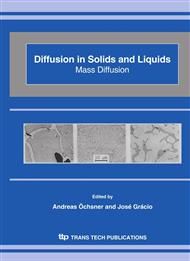p.46
p.52
p.59
p.63
p.68
p.73
p.79
p.85
p.91
Use of Sγ Momentums for the Modeling of Tracer Transport in Homogeneous Porous Media
Abstract:
Droplets transport in homogeneous porous media has been found to be an attractive problem applicable in a lot of industrial and scientific sectors such as enhanced oil recovery, food production, plastics etc. As applications become wider, a predictive method for the process is warranted. To this end, it has been widely accepted that the collection of γ-order moments, Sγ, can describe the time evolution of any spatially averaged quantity like the mean diameter of spherical droplets, while it has been also found that Sγ satisfies the transport equations [1]. Here, the so-called “Sγ concept” is applied in a CFD module for the modeling of the transport processes occurring in a mixture of a continuous aqueous phase which includes a discontinuous one in the form of droplets. This mixture flows within a homogeneous porous medium under creeping or laminar flow conditions. The momentums of the particle size distribution are evaluated using the local flow conditions as obtained from CFD simulations for the processes considered. To solve the transport equations, the microstructure droplets formation/destruction has been also taken into account by using already known analytical expressions for the source terms representing the break up and coalescence of the droplets [2-4]. The proposed constitutive model adequately simulates the effect of porous geometry on the droplets size distribution and could be helpful in understanding the phenomena that take place in microscopic scale.
Info:
Periodical:
Pages:
68-72
Citation:
Online since:
October 2006
Authors:
Keywords:
Price:
Сopyright:
© 2006 Trans Tech Publications Ltd. All Rights Reserved
Share:
Citation:


